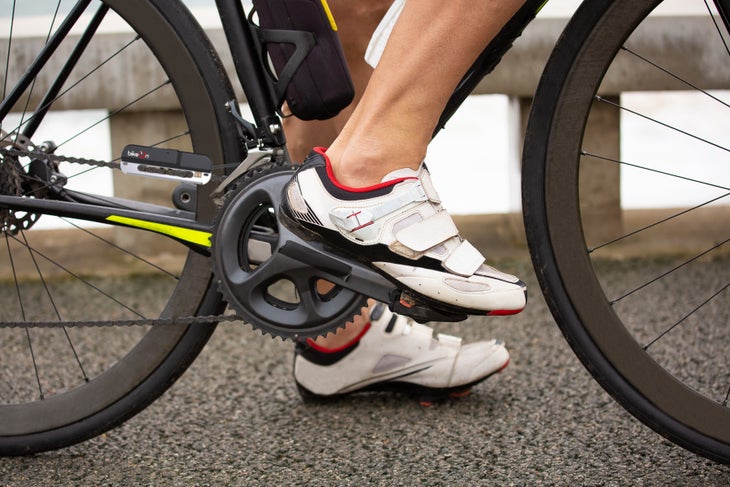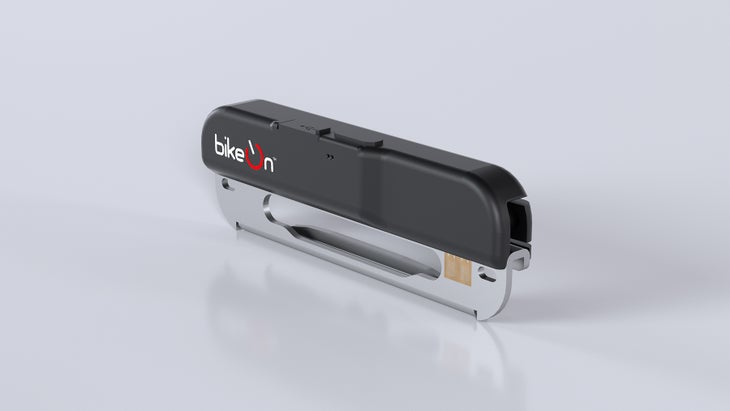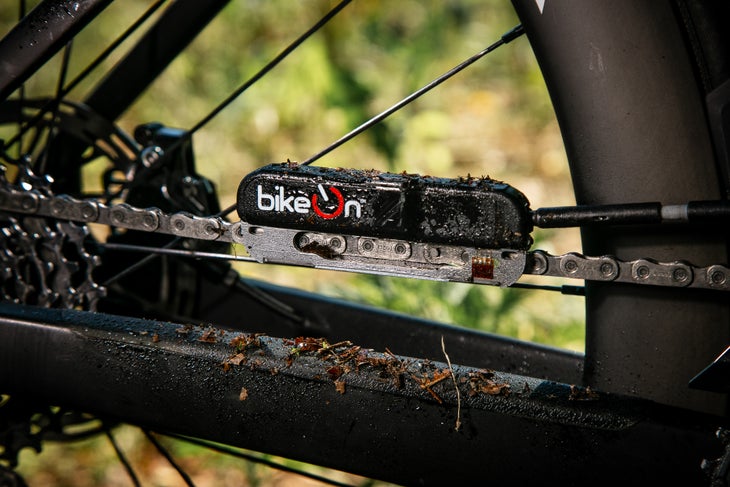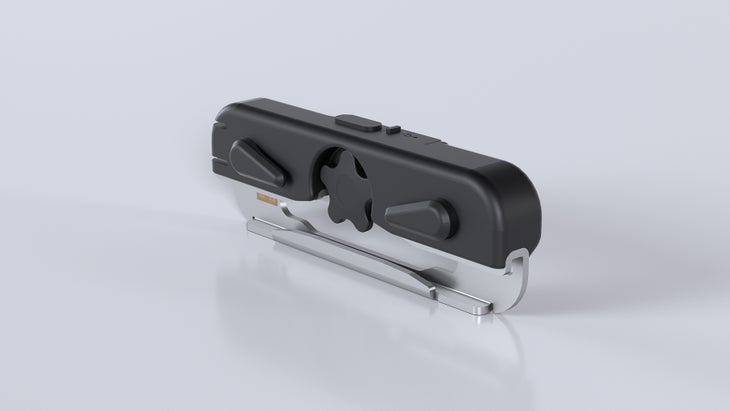The Sub-$200 BikeOn CycleClick Power Meter Clips Onto Your Chain – And Promises Accurate Power Reading, Too

I’ll just get right to it: there’s a whole new power meter that measures your power not from your pedals, your crankset, or even your rear hub (shout out PowerTap). Rather, the CycleClick power meter measures power output with a system that clips onto your chain. Your chain!
The company behind the CycleClick power meter, BikeOn, says its new sub-$200 power meter offers accuracy on par with industry leaders like SRM, Favero, and Quarq. That’s a wild take for something that is not only less expensive than the competition but also fairly easy to install, too.
Here’s what we know about it goes on sale on Kickstarter.

Quick hits: Six things to know about the BikeOn CycleClick
- The BikeOn CycleClick is a power meter system that promises power meter measurement just through measuring your chain
- Claimed +/- 1 percent accuracy
- Offers claimed 30 hour battery life with USB-C charging
- Price: $184 early bird, claimed $299 retail.
- Weight: ~40 g (claimed)
- For more: kickstarter.com
What is the BikeOn CycleClick?

In short, this is a clip on power meter that promises accurate readings by just having your chain run through the meter. BikeOn says its power meter can calculate cadence and measure power up to 2000 W.
Similar Reads
The system literally goes around your bike’s chain. Well, first you zip tie a mounting point to your front derailleur. The CycleClick bit measures power clips onto that mountain point. The mounting point attaches to a ball joint-ended arm of sorts, which then connects to the power meter.
The design works such that the device is free to move with the chain as you shift through the gears. That’s also the case as your chain bounces along, as it is designed to move with the chain, should there be any chain slap. And while the 40 g weight is lighter than most power meters, that’s still a decent bit of weight hanging out on your chain.

Power is then determined by detecting chain deflection in real time, through a “flexible metal channel” found at the bottom of the CycleClick. The metal channel flexes as the chain goes through, offering power data insight. Cadence, however, is calculated “by tracking chain speed and pedal position over time” by measuring peaks in the power force.
The CycleClick charges via USB-C, and works in temperatures between -10°C to 60°C (14 to 140 degrees Fahrenheit).
Interestingly, BikeOn says its new CycleClick power meter can also estimate left-right power between each leg via a separate sensor, though judging by how the feature will be delivered via an over-the-air update, it remains to be seen how that works.
Can you really measure power output with just your chain?

While the vast majority of power meters on the market rely on a strain gauge built into structural components that flex from your direct input (via a pedal or crank-based system), BikeOn says its system’s strain gauges this system is said to detect power from changes in chain tension and chain speed.
The system looks and feels unlike anything else on the market, and CycleClick claims its system adds just 0.1 percent resistance to an existing drivetrain, which itself can incur as much as 4 percent in power losses (for a really grimy, poorly maintained drivetrain).
Needless to say, the system appears extremely unconventional. Its clip-on nature appears better suited to non-performance-oriented bikes, or for folks who don’t care to have the most accurate power meter data. But considering the claims here, the system could very well be suited to those folks, too, and for considerably less money.
In the meantime, we’ve requested one for review to see how well this works for ourselves, or the wild clip-on bike motor and battery that’s also on BikeOn’s website. Stay tuned, or see more on the company’s current Kickstarter campaign.


